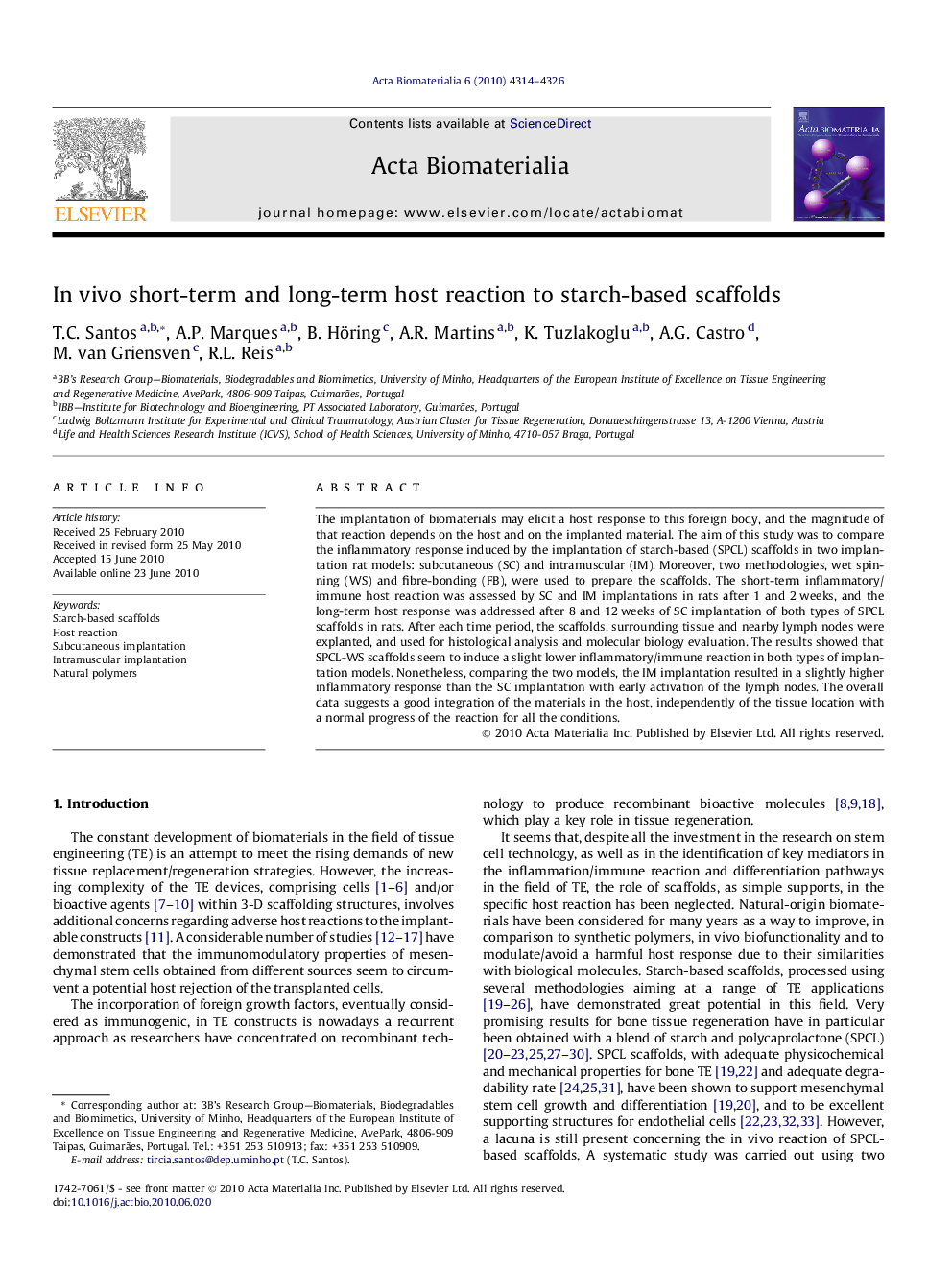| Article ID | Journal | Published Year | Pages | File Type |
|---|---|---|---|---|
| 1713 | Acta Biomaterialia | 2010 | 13 Pages |
The implantation of biomaterials may elicit a host response to this foreign body, and the magnitude of that reaction depends on the host and on the implanted material. The aim of this study was to compare the inflammatory response induced by the implantation of starch-based (SPCL) scaffolds in two implantation rat models: subcutaneous (SC) and intramuscular (IM). Moreover, two methodologies, wet spinning (WS) and fibre-bonding (FB), were used to prepare the scaffolds. The short-term inflammatory/immune host reaction was assessed by SC and IM implantations in rats after 1 and 2 weeks, and the long-term host response was addressed after 8 and 12 weeks of SC implantation of both types of SPCL scaffolds in rats. After each time period, the scaffolds, surrounding tissue and nearby lymph nodes were explanted, and used for histological analysis and molecular biology evaluation. The results showed that SPCL-WS scaffolds seem to induce a slight lower inflammatory/immune reaction in both types of implantation models. Nonetheless, comparing the two models, the IM implantation resulted in a slightly higher inflammatory response than the SC implantation with early activation of the lymph nodes. The overall data suggests a good integration of the materials in the host, independently of the tissue location with a normal progress of the reaction for all the conditions.
